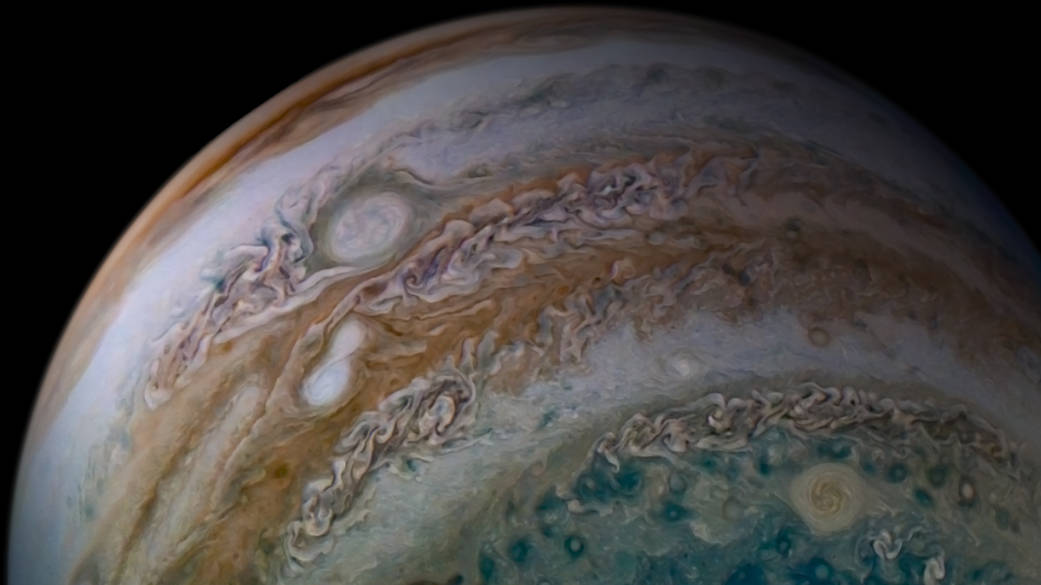This view of Jupiter’s atmosphere from NASA’s Juno spacecraft includes something remarkable: two storms caught in the act of merging.
The two white ovals seen within the orange-colored band left of center are anticyclonic storms — that is, storms that rotate counter-clockwise. The larger of the two ovals has been tracked for many years, as it grew in size through mergers with other anticyclonic white ovals. JunoCam was fortunate to capture this new merger, which typically takes place over the course of only a few days. The event interests scientists because the ovals had approached each other months earlier, only to move apart again.
This merger may be the result of perturbations due to the proximity of Oval BA, which is the larger storm just to the north of the two merging, white ovals. Oval BA is the second largest anticyclonic vortex in Jupiter’s atmosphere, second only to the famous Great Red Spot. During this pass over Jupiter, Juno gave scientists their best views of Oval BA to date.
Citizen scientist Tanya Oleksuik created this color-enhanced image using data from the JunoCam camera. The original image was taken on Dec. 26, 2019, at 10:28 a.m. PST (1:28 p.m. EST) as the Juno spacecraft performed its 24th close flyby of the planet. At the time, the spacecraft was about 44,900 miles (72,200 kilometers) from the tops of Jupiter’s clouds, at a latitude of about 60 degrees South.
JunoCam’s raw images are available for the public to peruse and process into image products at https://missionjuno.swri.edu/junocam/processing.
More information about Juno is at https://www.nasa.gov/juno and https://missionjuno.swri.edu.
Image credit:
Image data: NASA/JPL-Caltech/SwRI/MSSS
Image processing by Tanya Oleksuik, © CC BY






























